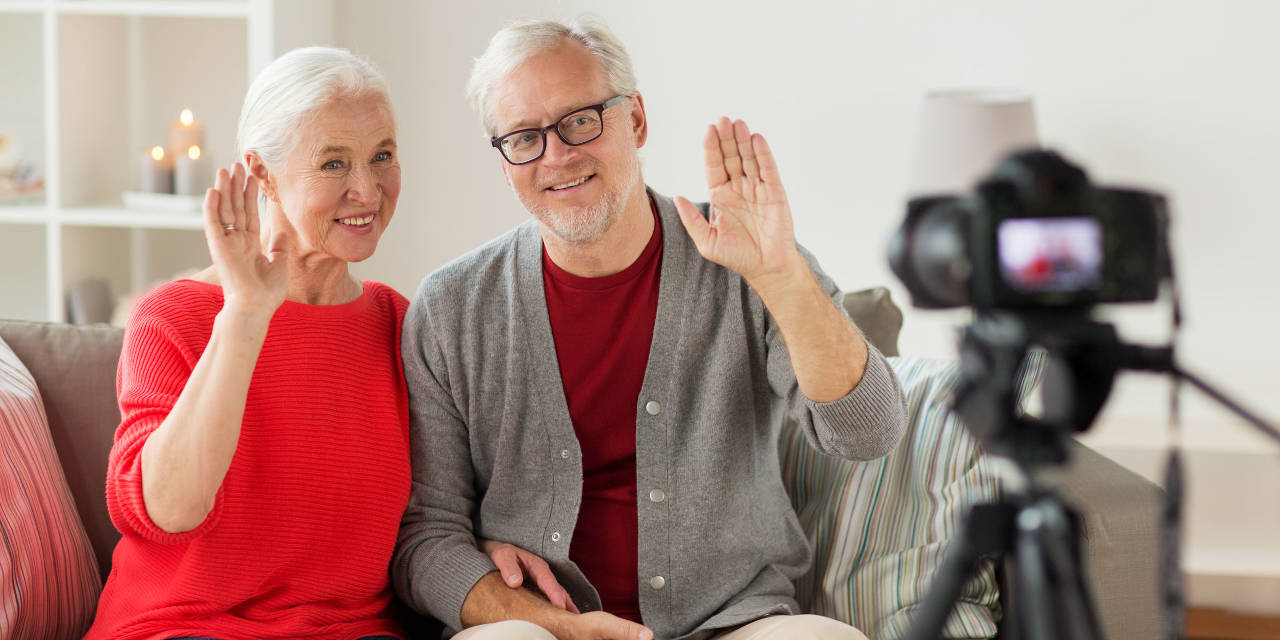By Susan Saldibar
Community relations directors and life engagement directors are some of the most creative, compassionate, hardworking people we have in senior care. They do everything, from soothing the frayed nerves of family members, to organizing and executing programs, to providing person-centered care to residents.
But when are they going to learn how to take a decent photo?
Okay, that’s unfair, I know. It can be next to impossible to capture a spontaneous moment in which everyone looks perfect, especially in senior living. That’s why so many of the candid photos we all see on Facebook pages and elsewhere are somewhat less than engaging. We could all use some tips. And Tom Sanders of Senior Stock Photos (a Senior Living Foresight partner) has plenty of them.
The Struggle Is Real
Tom and I spoke recently about the struggle that busy senior living staff members have in taking great candid photos. And Tom gets it. In addition to his groundbreaking work as a professional photographer, Tom is also a professor at the Savannah College of Art and Design in Savannah, Georgia. So he knows all the pitfalls.
So here, straight from Tom, are 5 tips to take better photos for social media and websites:
- Ask yourself, “What is the story behind this photo?” Are you taking a portrait of residents enjoying a meal? You’ll want to photograph someone who looks well-fed, is smiling and eating a great looking meal. Always stop and ask yourself what emotion you want your story to convey. Once you figure that out, you can begin to arrange your photo accordingly.
- Pay attention to lighting. Overhead lights can be harsh. They are typically “12:00 noon” lighting which creates a sunken shadow in the eyes of your subjects. This can give an almost skeletal quality to an older person. Try your best to get your subjects near a window with natural light. Natural light also evokes a feeling of openness in photos. Shoot near windows, whenever possible. Natural light can really boost the appearance of your photo.
- Don’t be afraid to turn on your camera flash. If you are shooting at night or in a dark room or corridor, a flash will work to your advantage. The vibrance of flash lighting can add a sense of fun and excitement to your photo.
- Clean up the room. This is especially important if you are shooting in an apartment. Clean it up. Clear away clutter. Less is more. If you have A/C vents or wires or anything else that detracts from what you are shooting, hide them with some plants or flowers. Be sure to open all the blinds and turn all lights on. You want to evoke energy and openness. Take time to prepare the room. The result is worth it.
- Pay attention to your subject. Remember that you are, in effect, “casting” the people who will help you present your community in an appealing, positive way to visitors. Remember, there may be prospective residents and families wanting to know how well you care for your residents, and if they seem happy. Look around for those lively, well-dressed people who always seem to look better, neater, and more put together. I have seen photos on social media of residents with food splattered on a shirt or hair uncombed. So casting is half the battle. Have them smile and look at the camera or at each other. Try to center some of your photos around activities. Say, “Hey we’re going to do a photo, let’s do a pose” to get them comfortable.
- Before you post, do a sanity check. I tell this to my students all the time. When I do critiques in class, we will take 30 minutes to look at a photo. Then we’ll have others look at it. They may see something the photographer missed. These sanity checks are especially important in senior living to make sure others react to the photo in a positive way.
Tom tells his students to always be on the lookout for photo ops that are unique and that draw in the viewer. This is especially true for images you want to use on social media. Showing ethnic diversity is also important. Look for opportunities to add some diversity to your images. Finally, make sure that you have waivers to photograph residents. This is often part of the residency agreement. Make sure you have that part signed.
That said, high-quality stock images can be a nice compliment to your own candid photo work. If you want to see for yourself how great stock images of seniors can be, check out Tom’s portfolio at Senior Stock Photos.








